If you've ever tried explaining SEO ROI to your CFO, you know it can feel a bit like selling invisible gold.
"Trust me, the traffic is growing!" only goes so far. In a world where paid ads get instant results and every marketing dollar is scrutinized, the long game of organic search profits needs to prove its value—loudly and clearly.
Not only is SEO the best way to produce sustainable growth, but you can also measure, track, and maximize its impact with clarity.
This guide is your playbook for understanding, justifying, and getting the most out of your SEO investment value in 2025.
Why SEO Is a High-Value Investment

Before allocating more resources to organic growth, consider the broader perspective: What makes SEO such a potent force for contemporary brands, particularly in the SaaS, eCommerce, and other digital-first sectors?
This question is key to understanding why SEO is not just a marketing tactic but a fundamental driver of sustainable business expansion.
Defining SEO Return on Investment
At its core, SEO ROI (search engine optimization return on investment) tells you whether all that time, content, and technical work is actually turning into profits. Unlike vanity metrics like impressions or rankings, SEO ROI connects real dollars earned with dollars spent, showing the true SEO business value of your search strategy.
The Difference Between ROI and Traffic Growth
It's tempting to celebrate every jump in website visitors.
But while traffic growth is exciting, the real win is when visitors:
- Convert
- Buy
- Sign up
That's why true search optimization payback measures not just how many people arrive, but how many become customers, leads, or advocates.
Lower CAC (Customer Acquisition Cost) Over Time
Here's a stat every CFO loves: Unlike paid ads, SEO's customer acquisition cost shrinks over time. Once your pages rank, they can keep delivering leads for months or years, dramatically lowering what you pay to win new business.
Evergreen Content and Ranking Longevity = SEO Financial Benefits
Let's talk about content marketing with legs.
Great evergreen content doesn't just spike traffic for a week—it brings in organic search profits year after year. Each article, guide, or FAQ is an investment that pays dividends far into the future.
Brand Visibility and Trust: Unquantifiable but Critical
While not every benefit fits on a balance sheet, don't underestimate the trust and authority that come with top organic rankings. When your site dominates search, you become the brand people trust—before they've even clicked.
SEO ROI Statistics to Know in 2025

If you want to convince your team—or yourself—that SEO is worth every penny, the numbers are on your side.
Let's put some data behind those gut feelings.
|
Channel |
Avg ROI |
Time to ROI |
Longevity |
CAC (Customer Acquisition Cost) |
|
SEO |
500%+ |
6–12 months |
Years |
Low (drops over time) |
|
PPC |
200%–300% |
Immediate |
Short |
Higher (stays steady) |
|
Paid Social |
150%–250% |
1–2 months |
Medium |
Medium |
Still on the fence? Let's chat about how these numbers can specifically apply to your business and help you achieve sustainable growth.
Percent of Marketers Who Say SEO Has Highest ROI
SEO's reputation as a high-ROI channel is well-established among marketers.
The following statistics highlight the strong preference for SEO due to its ability to generate quality leads and sustainable results:
- 60% of marketers report that inbound strategies like SEO and blog content deliver the highest quality leads.
- 49% of business owners surveyed by Reboot indicate SEO offers the best ROI among marketing channels, compared to 24% for email marketing and 13% for social media.
- 60% of B2B marketers view SEO as the most effective digital marketing channel, citing its ability to drive consistent traffic and conversions.
- 58.7% of marketers believe SEO ROI has increased in recent years, with only 3.7% noting a significant decrease.
- 16% of B2B marketers tie SEO (website/blog) with social media as the top ROI channel, per HubSpot's 2025 State of Marketing Report.
Marketers consistently prioritize SEO for its ability to attract high-intent leads and deliver measurable returns, making it a cornerstone of 2025 digital strategies.
Click Share: Paid vs. Organic Results
The distribution of clicks between paid and organic search results highlights the dominance of organic traffic. The table below summarizes key click share metrics:
|
Metric |
Organic Search |
Paid Search |
|
Click Share on Google |
65% |
35% |
|
Avg. CTR for Top Result |
25.84% |
2-3% |
|
Daily Global Clicks |
4.6 billion |
16.4 million |
|
Second Page Click Rate |
0.67% |
N/A |
Sources: FirstPageSage, HubSpot, explodingtopics.com, Backlinko
SEO vs. PPC Campaigns: ROI Comparison
SEO outperforms PPC in long-term ROI, with an average return of 8x compared to PPC's 4x, based on data from 119 companies.
Approximately 70% of marketers confirm SEO generates more sales than PPC, as it leverages high-quality content to attract organic leads.
Without SEO, businesses may face higher ad spend to achieve similar audience reach. While PPC delivers faster results (within 1-3 months), SEO campaigns typically achieve positive ROI within 6-12 months, with peak results in years two or three.
B2B vs. B2C Search Behaviour
In B2B, organic search drives 44.6% of revenue, with Google commanding an 84.9% search market share.
About 91% of B2B buyers prefer online purchases, and 67% begin their journey with a search, with conversion rates ranging from 1.1% to 7.4% (highest in legal services at 7.5%).
In contrast, B2C search behaviour emphasizes mobile, with 63% of consumers using mobile devices for brand discovery and 32.9% finding products via search engines. B2C SEO ROI is lower (e.g., 317% for e-commerce vs. 702% for B2B SaaS), but mobile optimization is critical, as 58.99% of global web traffic is mobile-driven. B2B buyers prioritize company websites (63% visit directly), while B2C users rely heavily on mobile and local search (72% search for local businesses).
Key Drivers of SEO Return on Investment

Understanding SEO ROI isn't just about knowing the numbers—it's about knowing what moves those numbers in the right direction.
Here's what truly impacts your search marketing returns.
Content Quality and Consistency
Before you even think about technical tweaks or backlinks, content is the cornerstone.
Let's break down why quality and consistency drive results:
- Long-Form, E-E-A-T Rich Content Builds Trust: Google rewards Experience, Expertise, Authoritativeness, and Trustworthiness. Well-written, deeply researched guides and blogs consistently outperform quick-hit posts.
- Frequency Drives Topical Authority and Cumulative Traffic: Publishing regularly doesn't just increase page count; it builds your authority and captures more keywords, driving exponential growth.
In short, the more valuable and consistent your content, the stronger your organic search profits will be.
Technical Health of the Website
Your website's technical health is the engine under the hood.
Why do these factors matter?
Firstly, Google's algorithms prioritize websites that offer a fast, mobile-friendly, and easily indexable experience, meaning your pages should load quickly, be simple to navigate on any device, and be easy for search engine bots to crawl and understand.
Secondly, it is crucial to conduct regular audits using tools like PageSpeed Insights and Google Search Console. These tools allow you to identify and resolve potential issues proactively, preventing them from negatively impacting your search rankings and, ultimately, your financial results.
A healthy site is the foundation for every other SEO gain. Don't ignore it!
Link Building and Authority Growth
Links are still SEO's vote of confidence.
Let's look at why:
- Backlinks from reputable sites accelerate your visibility and ranking: Google still counts links as a major ranking factor. Aim for links from trusted, relevant sources—not just any site you can find.
- Consistent link building signals authority and relevance: Each new quality link compounds your authority, helping all your content perform better.
Building authority through quality backlinks is a fast track to search optimization payback.
Conversion-Focused SEO
Driving traffic is half the story—turning visitors into customers is where ROI multiplies.
Here's how conversion-focused SEO amplifies your search marketing returns:
- Optimized calls to action (CTAs): Clear, compelling CTAs guide visitors to take the next step, whether it's signing up, requesting a demo, or making a purchase.
- Improved UX and journey flow: Make it easy for visitors to find what they need and act, and your organic search profits will soar.
Conversion optimization transforms SEO from a traffic play into a true business value driver.
How to Measure SEO ROI (Step-by-Step)

Now that you know the "why," let's get hands-on. Measuring SEO ROI doesn't have to require a data science degree—just a systematic approach. Here's how to break it down.
We'll walk through each step, and at the end, you'll find a formula you can use to calculate your own search optimization payback.
Define Your Investment
Before you can measure returns, you need to tally up what you're putting in:
- In-House vs. Agency Costs: Add up salaries, freelance fees, or agency retainers.
- Tools, Platform, and Time: Don't forget software subscriptions, platform fees, and hours spent on planning, writing, and optimization.
Knowing your true SEO investment value sets the stage for accurate ROI measurement.
Attribute Revenue from Organic Search
Once you know what you're spending, the next step is tying revenue to your organic efforts:
- Tracking Revenue via GA4 and Search Console: Set up goals and eCommerce tracking so you can see exactly which organic visits convert.
- Multi-Touch Attribution Models: Remember, not all conversions are last-click. Look at the bigger journey—many customers find you through search, return via email, and convert after a retargeting ad.
This approach gives a fuller picture of the true impact of your SEO investment.
Estimate Lifetime Value of SEO Leads
Organic customers often have higher lifetime value.
Here's how to calculate:
- Use Historical Data to Estimate LTV: Review past customers from SEO channels to determine average spend over their "lifetime."
- Tie to Cost Per Acquisition: Compare this value to your SEO acquisition costs for a true measure of ROI.
Understanding LTV shows why SEO financial benefits can dwarf short-term paid results.
Calculate and Monitor
With all numbers in hand, use this basic ROI formula:
SEO ROI = (SEO Revenue – SEO Costs) / SEO Costs x 100%
For example, if you spent $12,000 on SEO in a year and made $60,000 in organic sales, your ROI is ((60,000 – 12,000) / 12,000) x 100% = 400%.
When you see those positive trends, you'll have proof your search optimization payback is real—and growing!
Maximizing SEO Investment Value: Best Practices

Knowing what works is only half the battle—implementing best practices ensures you capture every dollar of seo business value your campaigns can offer.
Here's how to keep your returns growing:
- Set clear, realistic goals from the outset
- Prioritize quality, relevance, and user intent over keyword stuffing
- Invest in regular technical audits and address issues fast
- Focus on earning high-quality backlinks (not just any link)
- Monitor results, test, and adapt your strategy continuously
- Align content and UX to drive conversions, not just traffic
- Regularly report wins and progress to stakeholders (with clear data)
When these best practices are part of your routine, you don't just maximize search optimization payback—you future-proof your search marketing returns for whatever changes Google throws your way.
Ready to Turn SEO ROI Into Your Business's Secret Weapon?
SEO is not an overnight win—it's an investment that compounds. But when done right, it's the engine behind the biggest, most sustainable marketing returns you'll ever see.
Finally ready to make SEO the growth lever you deserve? Roketto's got your back.
Contact us, and let's turn your search optimization payback into tangible, measurable business value—together.

Ulf Lonegren
Ulf Lonegren is CEO and Co-Founder of Roketto, where he has led digital marketing strategy for over 15 years. With extensive experience in both traditional SEO and emerging AI search optimization, Ulf has guided hundreds of SaaS and ecommerce companies through major search algorithm updates and platform shifts. His expertise spans from the early days of Google's algorithm changes through the current AI revolution, giving him unique insight into what actually drives sustainable search visibility. Ulf's approach focuses on fundamental optimization principles that adapt to new technologies rather than chasing trending acronyms, a philosophy that has helped Roketto's clients achieve measurable growth across multiple search paradigm shifts.











2.png)
2.png)









